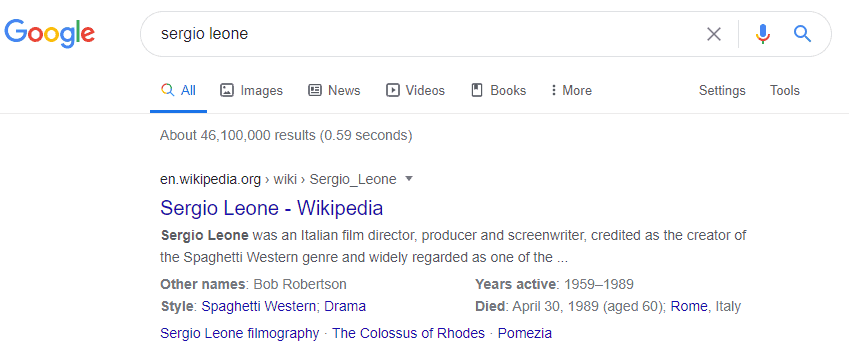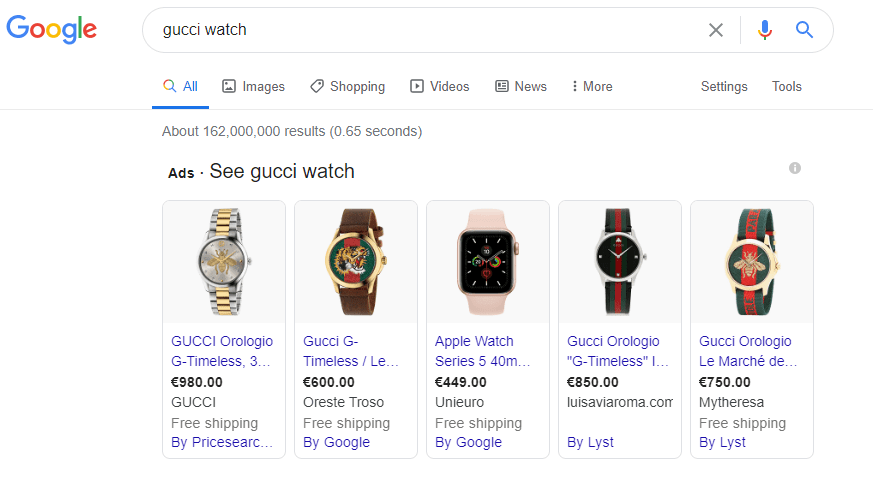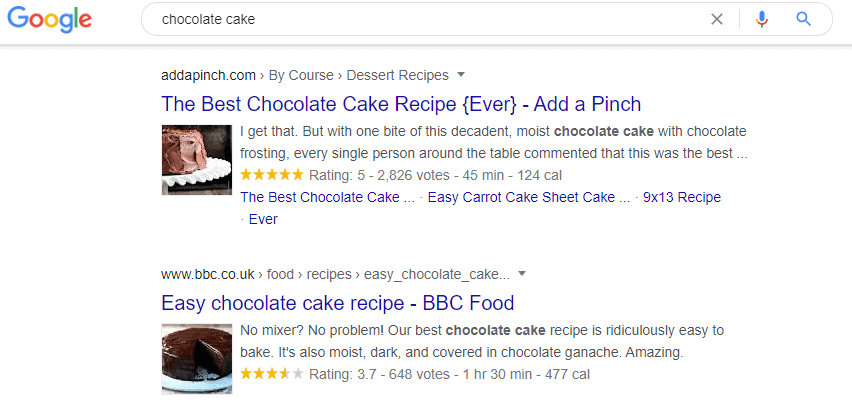What is Google’s SERP?
Are you taking your first steps in the world of SEO and don’t know where to begin?
Let’s start with the basics. SERP is a fundamental part of SEO and therefore deserves an in-depth study.
What is SERP?
As you can imagine, SERP is an acronym. It stands for Search Engine Results Page.
Keeping it simple, it’s that page that contains the results that Google (and other search engines) provides to those looking for information about a particular keyword.
SERPs have evolved and have become much more complicated than a few years ago. Take Google’s. It’s easy to notice how much its SERPs have changed over time.
As always, it comes with a minimal style: a simple search bar below the logo, which is often replaced by a doodle.
Besides them, there are few other buttons: links to Google’s products and services (Gmail, Google Images, Google Apps, and Google Accounts) and the “customize” feature.
But, to discover Page and Brin’s creature’s real magic, we must type a query. Here, we can see how Google never ceases to surprise us: welcome to the actual SERP!
The filter bar and search tools
Between the search bar and Google’s SERP, we find search tools and filters. Depending on the topic you are looking for, the order of these items can change.
We type, for example, Sergio Leone. In addition to the main news in the Web section, we can refine the search by Images, Videos, News, and Books.

This order is neither random nor fixed: Google understands we’re searching for a director and gives us the most relevant information and the most relevant content first.
Thanks to Universal Search, the Google page also shows various elements of the results. In addition to the traditional Snippets that lead to web pages, we find the news box, images, videos, and the Knowledge Graph.
If the search intent is local – the user searches “restaurant + City Name”–, the maps will be in second place because the user is looking for a restaurant nearby.
How does the SERP change?
The Search Engine Result Page will show a series of items based on the type of search: navigational, informational, or transactional.
In some cases, if the search is for a buyable item, paid results may appear.
An example? If the user searches for a “Gucci watch” on Google, she will find ads that will lead her to buy that watch.

We can find advertisements on the right side of the SERP, in the beginning, or the final part.
The SERP is no longer a simple list of URLs. It is a page that, depending on the query, provides different types of results and tries to refine itself over time, learning to respond to the user’s search intent.
To make its service more efficient, Google gives logged users the ability to use the “Your Related Searches” feature. This feature takes advantage of the user’s search history to return the most accurate results for her.
To satisfy the user’s search intent, the SERP can answer to the user even before showing results. If the query typed on the search bar is a question like What is the distance between Earth and Moon, the SERP will return a box with Google’s direct answer.
The elements that make up the SERP results
We start with the standard result – i.e., the snippet. It is crucial if you want to rank well within the SERP.
The snippet can be broken down into three elements.
Page title: By clicking on it, the user lands on the page.
URL. It is colored green. Sometimes we can see the breadcrumbs instead of the URL. The latter being the description of the path that goes from the website’s home to that specific page.
In this way, the user can access the page category.
Meta description: It is a description of the page. We can enter it on the page code through a specific tag. If we don’t set it, Google will create one taking an excerpt from the page that it considers consistent with the user’s search.
The snippet can also include other elements that will help your result to stand out against the competitors. We are talking about sitelinks, minilinks, and rich snippets.
Sitelinks
Sitelinks are links to the internal pages of the site. They also are a clue of a good SEO job because Google only shows them for the first result and only if it finds them useful for the user.
Minilinks
Like the site links, they are a series of links shown below the snippet. Minilinks allow the user to go from the page snippet to a different page of the same website.
Unlike site links, they can also appear for rankings other than the first one.
Rich snippet
Finally, rich snippets are search results that show on the SERP additional information.

Search engines use structured data to make a rich snippet appear in the SERP. It is a set of semantic tags that help the algorithm to interpret information.
Thanks to structured data, we can allow Google to show the ratings our customer gave to our products, to notify the user of events, or show the cost of a product or service.
To learn more about rich snippets, we suggest you read our dedicated article.
Check your site’s SERP ranking
Now that you’ve fully understood what Google’s SERP is, what it’s made up of, and what elements can help a website’s ranking, you may be wondering how to verify the ranking of your pages within the SERP.
Use Google!
The first way to verify the ranking of your website is to use a search engine. Log out to not influence the search engine and perform your tests on the search bar.
Google Search Console
Google Search Console is a tool that, among its many features, it also allows checking the pages’ average ranking.
To check your ranking regarding specific keywords, we just have to click on “Performance” on the left menu.
From this screen, you will be able to view locations based on:
- Search queries
- Pages
- Countries
- Devices
- Appearance in search
- Date






